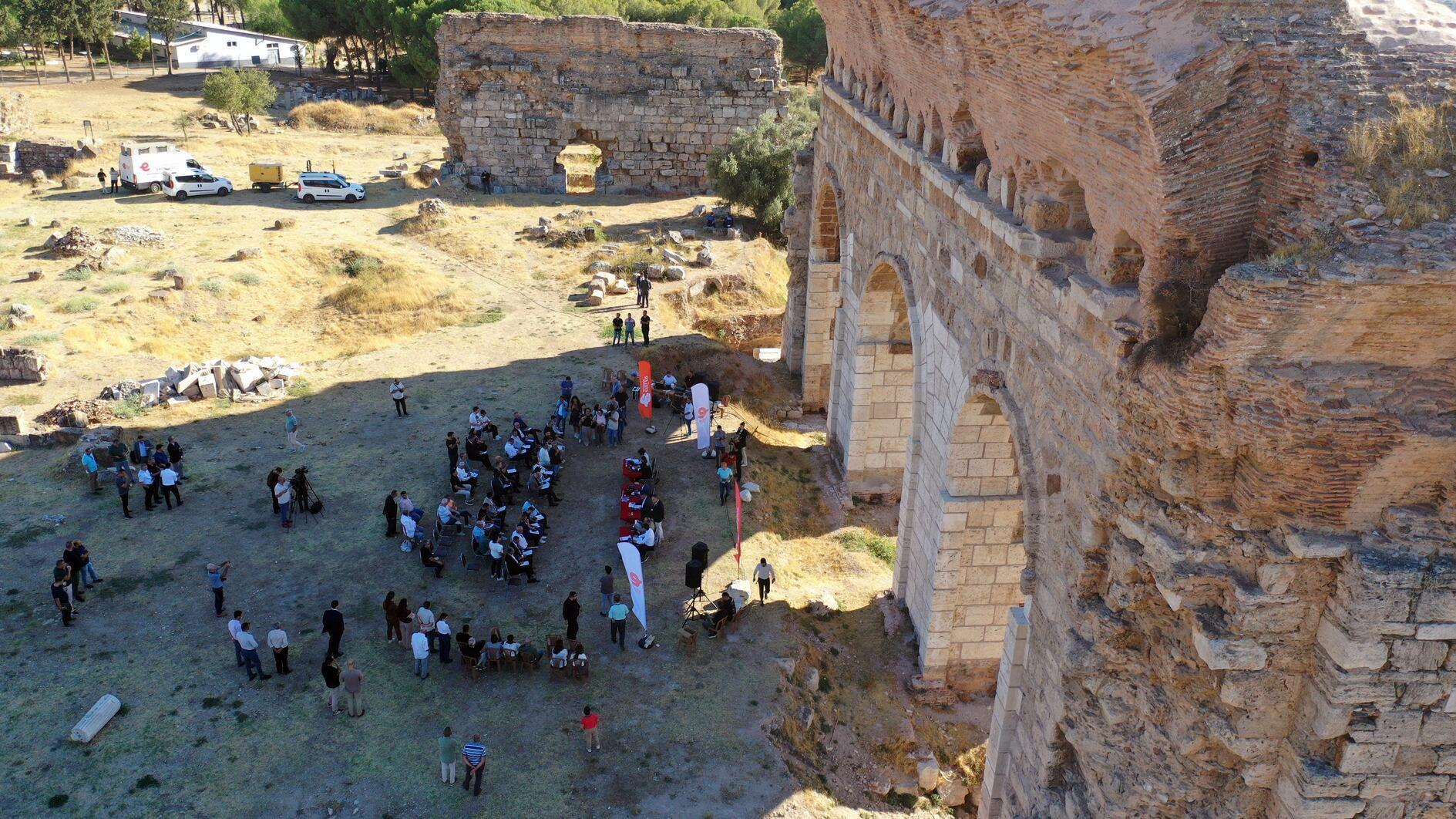
Works are ongoing across several ancient cities in Türkiye as preparations move forward to open more historic sites to tourism, including the ancient city of Tralleis in the western province of Aydın which is expected to be opened to visitors in 2025.
The city of Tralleis, nestled in the Efeler district, has long been a focus of archaeological interest. Thought to be one of the earliest settlements in the region, Tralleis has hosted numerous civilizations throughout its history.
Excavations at the site, which initially began in 1996, are currently led by Murat Çekilmez, the head of excavations. His team is working tirelessly under the Culture and Tourism Ministry’s “Tourism for the Future” project.
With projects designed to make the city more accessible to tourists now completed, the ancient city is expected to open its gates to the public by 2025.
“The landscaping project has been completed and we have received approval from the board,” Çekilmez explained. “We want to bring this place together with the public and open it next year.”
The city’s ruins, including temples, public baths and homes, provide a vivid picture of ancient times, showcasing the influence of various civilizations that once thrived in the region.
As the excavation team works through the final month of this year’s dig, hopes are high for an exciting debut.
Meanwhile, on Türkiye’s southern coast, another ancient marvel is preparing to enhance the country’s tourism scene.
Elaiussa Sebaste, located in Mersin’s Erdemli district, is a former Roman and Byzantine port city dating back over two millennia.
The site is particularly known for its necropolis which houses an array of tombs belonging to prominent figures from its past.
Under the direction of Asena Kızılarslanoğlu, Head of the Department of Archaeology from Kastamonu University, this year’s excavation efforts have focused on cleaning the site’s northern necropolis, unveiling tombs that has long been obscured by vegetation.
“We conducted detailed cleaning work inside and in front of the tombs, allowing visitors to visually experience the necropolis more easily,” Kızılarslanoğlu said.
The project also seeks to enhance the visitor experience by creating a walking route along the ancient Roman road that passes through the site.
“This road continues until Kızkalesi, and we aim to make a beautiful trekking route,” Kızılarslanoğlu explained.
The route, which runs parallel to the modern highway, offers the chance for visitors to walk in the footsteps of the ancients, with sights including two Roman-era churches and impressive tomb architecture.